Introduction
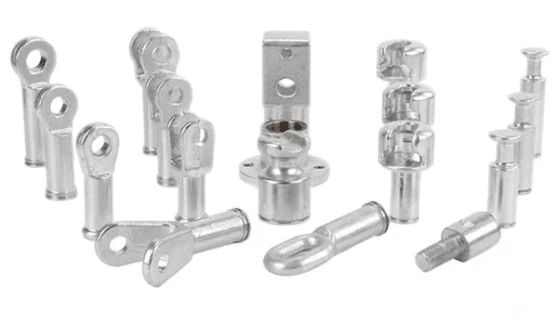
In the world of electrical infrastructure, understanding transmission line dampers is crucial for maintaining system integrity and reliability. These devices play a pivotal role in mitigating vibrations that can adversely affect power lines, potentially leading to costly outages and repairs. By grasping the fundamentals of dampers, we can appreciate their importance in ensuring stable and efficient transmission of electricity.
Understanding Dampers in Transmission Lines
Transmission line dampers are specialized devices designed to reduce oscillations caused by wind, ice, or other environmental factors. They are essential components that help maintain the structural integrity of power lines while optimizing performance. With various types of dampers in transmission lines available, including the well-known Stockbridge damper and spacer damper transmission line designs, each serves a unique purpose tailored to specific conditions.
Why Vibration Control Matters
Vibration control is not just an engineering afterthought; it’s a fundamental aspect of reliable electrical distribution systems. Excessive vibrations can lead to mechanical fatigue, resulting in equipment failure or even catastrophic incidents if left unchecked. By employing effective transmission line dampers, utility companies can enhance system resilience and ensure continuous power delivery to consumers.
Overview of Spacer and Vibration Dampers
In our exploration of vibration management solutions, spacer dampers and vibration dampers emerge as key players in enhancing transmission line performance. Spacer dampers work by maintaining proper spacing between conductors while absorbing vibrations; on the other hand, vibration dampers are designed primarily for damping oscillations across various structures. Understanding how these two types function will provide insight into their respective roles in safeguarding our electrical networks.
What Are Transmission Line Dampers
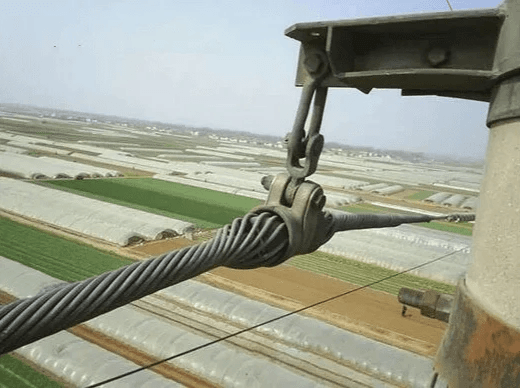
Transmission line dampers are essential components designed to mitigate vibrations and oscillations in overhead power lines. These devices play a crucial role in maintaining the integrity and performance of electrical infrastructure, ensuring that transmission lines can withstand various environmental stresses without compromising safety or efficiency. By effectively dampening vibrations, these dampers help prevent damage to both the lines and associated equipment.
Definition and Purpose of Dampers
Dampers in transmission lines are devices specifically engineered to absorb and dissipate energy from mechanical vibrations caused by wind, ice, or other external forces. Their primary purpose is to reduce the amplitude of oscillations that can lead to fatigue failure or even catastrophic line failures. In essence, they act as shock absorbers for power lines, enhancing their longevity and reliability.
Importance in Electrical Infrastructure
The importance of transmission line dampers cannot be overstated; they are vital for ensuring stable electrical distribution across vast networks. Without these dampers, power lines would be more susceptible to dynamic loads that could result in outages or costly repairs. Therefore, investing in effective damper solutions is not just a matter of compliance but a strategic move towards a resilient electrical infrastructure.
Key Characteristics of Transmission Line Dampers
Key characteristics of transmission line dampers include their design flexibility, material durability, and effectiveness across various environmental conditions. They come in different types—like spacer damper transmission line configurations or Stockbridge damper in transmission line designs—each tailored for specific applications within the grid system. Furthermore, understanding how does a Stockbridge damper work compared to other types can provide insights into selecting the right solution for your needs.
Types of Dampers in Transmission Lines
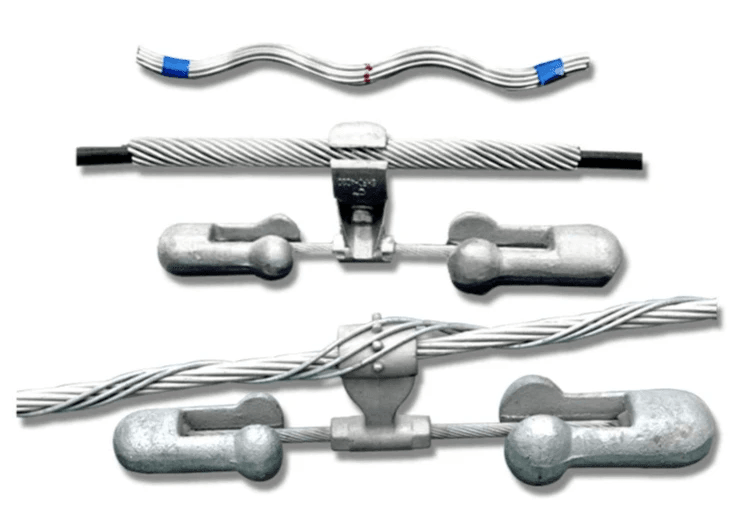
Spacer Dampers Explored
Spacer dampers are an integral part of transmission line dampers designed primarily to mitigate vibrations caused by wind and other external forces. These devices are typically installed between conductors to maintain proper spacing while also absorbing energy from oscillations in the lines. The unique design of spacer damper transmission lines allows them to enhance the overall performance and longevity of electrical systems by preventing conductor clashing and wear.
The key advantage of spacer dampers lies in their ability to distribute stress evenly across the conductors, reducing fatigue over time. Their lightweight construction makes them easy to install without adding significant load to existing structures. Additionally, spacer dampers can be customized based on specific environmental conditions, making them a versatile choice for utility companies.
Stockbridge Dampers in Transmission Lines
Now let’s delve into the Stockbridge damper in transmission line applications—a popular choice among engineers due to its effectiveness in reducing vibrations. This type of damper consists of a mass-spring system that is strategically placed on the overhead lines to counteract oscillations caused by wind or galloping conductors. Understanding how does a Stockbridge damper work reveals its dual functionality: it not only reduces vibrations but also stabilizes the conductor's position during adverse weather conditions.
Stockbridge dampers excel at controlling low-frequency vibrations that could lead to fatigue failure over time if left unchecked. Utility companies often favor these dampers because they require minimal maintenance once installed, making them a cost-effective solution for long-term vibration management. Their proven track record in real-world applications further solidifies their reputation as a reliable component within transmission line infrastructure.
Comparing Various Damper Types
When comparing various damper types within transmission lines—like spacer and Stockbridge—it's crucial to consider their unique advantages and applications. While both serve similar purposes in vibration control, their mechanisms differ significantly; spacer dampers focus more on spacing between conductors while Stockbridge dampers address oscillation damping directly. This distinction makes each type suitable for different scenarios depending on environmental factors like wind speed and terrain.
Additionally, understanding transmission line dampers price considerations can help utilities make informed decisions when selecting the right damper type for their needs. Spacer dampers may present lower upfront costs due to simpler designs but might require more frequent replacements under extreme conditions compared to durable Stockbridge options that may have higher initial investments but longer lifespans overall. Ultimately, choosing between these two types requires careful evaluation based on specific project requirements and budget constraints.
Transmission Line Dampers vs Vibration Dampers
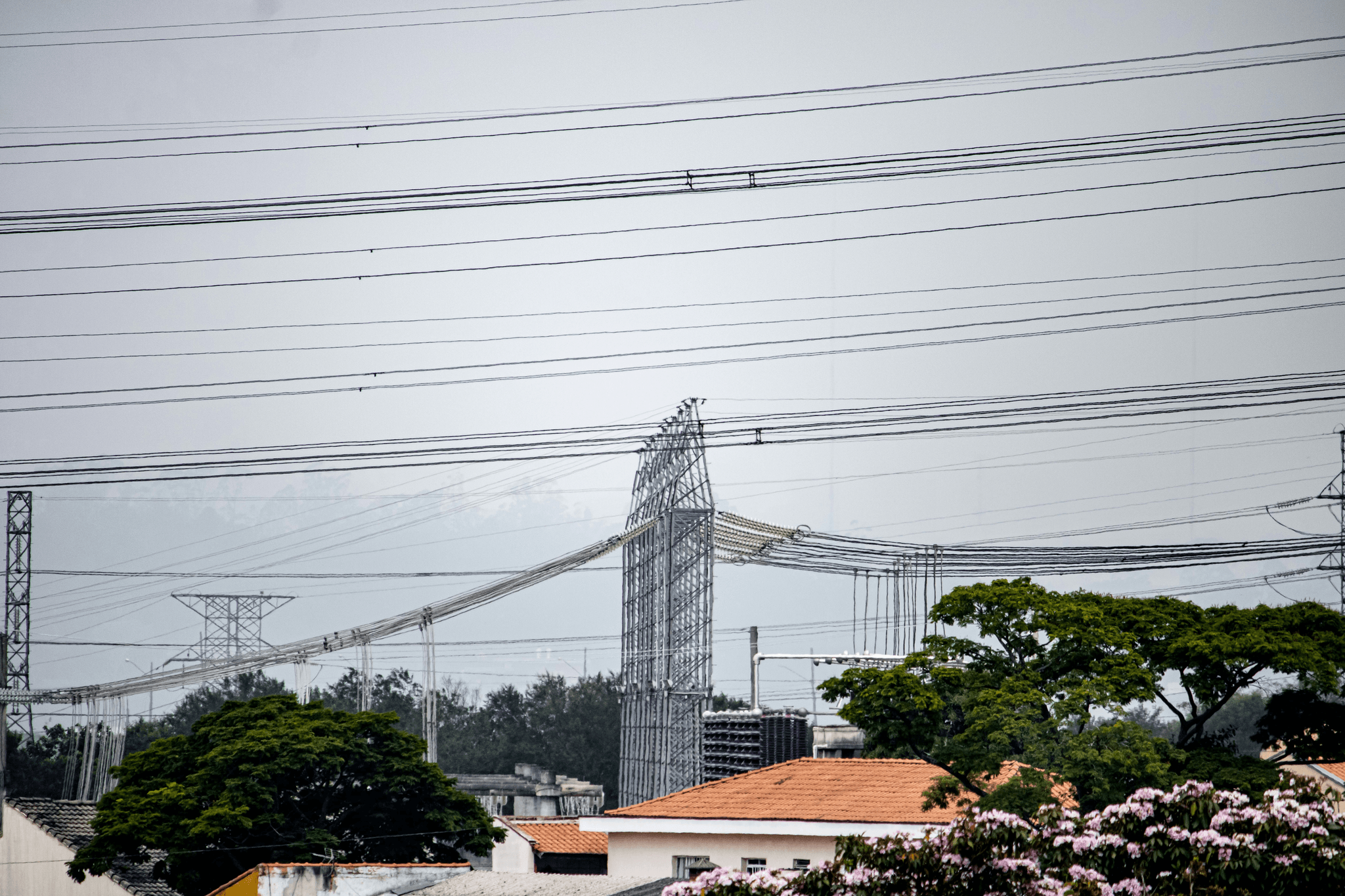
When we dive into the world of transmission line dampers and vibration dampers, it’s essential to understand their distinct roles. While both types of dampers are designed to mitigate vibrations, they serve different purposes within electrical infrastructure. Transmission line dampers focus on stabilizing overhead lines against wind-induced oscillations, whereas vibration dampers generally address broader mechanical vibrations in various systems.
Functional Differences Explained
Transmission line dampers are specifically engineered to counteract oscillatory movements in power lines, particularly those caused by environmental factors like wind or ice loading. In contrast, vibration dampers are more versatile and can be utilized across a range of applications—from machinery to buildings—addressing general vibrational issues rather than focusing solely on electrical lines. This functional divergence means that while all transmission line dampers can be considered vibration dampers, not all vibration dampers qualify as transmission line dampers.
Applications in Electrical Distribution
The applications of transmission line dampers are crucial for ensuring the reliability and efficiency of electrical distribution systems. For instance, Stockbridge damper in transmission lines is commonly employed to reduce vibrations that could lead to conductor fatigue or even failure over time. Spacer damper transmission line installations also play a vital role by maintaining proper spacing between conductors while minimizing movement due to external forces—an essential feature for long-distance power transmission.
Impact on System Reliability
The impact of these specialized damper types on system reliability cannot be overstated; they significantly enhance the durability of electrical infrastructures. By effectively controlling oscillations with tools like Stockbridge and spacer dampers, utilities can prevent costly outages and maintain consistent power delivery across regions. Ultimately, investing in quality transmission line dampers translates into long-term savings and improved performance for electrical distribution networks.
How Does a Stockbridge Damper Work

These dampers are ingeniously designed to reduce oscillations caused by wind, ice, and other environmental factors that can negatively impact the integrity of transmission lines. Understanding how does a Stockbridge damper work is essential for appreciating its role in maintaining reliable electrical infrastructure.
Mechanism Behind the Stockbridge Damper
The Stockbridge damper operates through a clever mechanism that utilizes mass and stiffness to counteract vibration forces. It consists of two weights attached to a wire, which acts as a pendulum; when vibrations occur, the weights move in opposition to the oscillation of the transmission line. This counter-movement effectively dissipates energy and reduces the amplitude of vibrations, thereby protecting both the line and its components from excessive stress.
In essence, this dynamic response allows the Stockbridge damper in transmission lines to absorb shocks and dampen oscillations efficiently. Its design is not only effective but also lightweight, making it an ideal choice among various types of dampers in transmission lines. By strategically placing these dampers along transmission spans, utilities can significantly extend the lifespan of their infrastructure while enhancing overall system reliability.
Advantages of Using Stockbridge Dampers
One of the primary advantages of using Stockbridge dampers is their ability to operate effectively across a wide range of frequencies and conditions. This versatility makes them suitable for various applications within electrical distribution systems where vibration control is critical. Compared to other options available in transmission line dampers, such as spacer damper transmission lines, Stockbridge dampers provide superior performance with minimal maintenance needs.
Additionally, they are designed for easy installation on existing structures without requiring major modifications or downtime—an attractive feature for utility companies aiming to optimize their operations without incurring significant costs or disruptions. The durability and effectiveness of these devices contribute directly to enhanced system reliability by preventing failures related to fatigue or structural damage.
Moreover, when considering transmission line dampers price factors, investing in quality solutions like Stockbridge dampers often proves more economical over time due to reduced maintenance requirements and extended service life compared with cheaper alternatives that may need frequent replacements.
Real-World Applications and Case Studies
Stockbridge dampers have been successfully implemented across numerous real-world scenarios involving high-voltage power lines worldwide. For instance, utility companies have reported significant reductions in vibration-related issues after installing these devices on long spans susceptible to wind-induced oscillations or ice accumulation during harsh weather conditions. Such implementations demonstrate how effective these damping solutions can be at preserving electrical infrastructure integrity while minimizing maintenance costs.
Case studies reveal that regions prone to severe weather events have particularly benefited from integrating Stockbridge dampers into their systems—proving invaluable during storms where strong winds could otherwise lead to catastrophic failures if left unchecked. Additionally, ongoing research continues exploring innovative applications beyond traditional uses; advancements may further enhance understanding regarding which types of dampers in transmission lines yield optimal results under specific environmental pressures.
In conclusion, understanding how does a Stockbridge damper work helps highlight its importance within modern electrical distribution networks—offering both immediate benefits through improved stability as well as long-term savings by reducing wear-and-tear on vital assets over time.
Spacer Damper Transmission Line: A Deep Dive
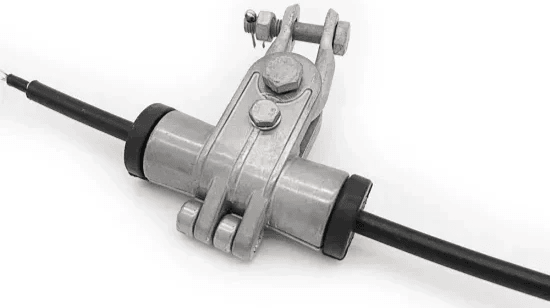
In the realm of transmission line dampers, spacer dampers play a pivotal role in ensuring the stability and longevity of electrical infrastructure. These devices are strategically placed to mitigate vibrations caused by wind, ice, and other environmental factors. Understanding their design and functionality is essential for grasping how they contribute to the overall effectiveness of transmission systems.
Design and Functionality
Spacer dampers are designed with a specific purpose: to reduce oscillations in transmission lines while maintaining proper spacing between conductors. Typically consisting of a series of masses and flexible elements, these dampers absorb vibrational energy, preventing excessive sway that could lead to structural failures. The unique design allows them to be lightweight yet highly effective, making them an integral part of modern electrical infrastructure.
The functionality of spacer dampers is closely tied to their ability to counteract the forces exerted on transmission lines during adverse weather conditions. By dissipating energy from wind-induced vibrations or thermal expansion, spacer dampers help maintain the integrity of the entire system. This aspect is particularly important when discussing types of dampers in transmission lines since each type serves a distinct purpose within the network.
Common Uses in Transmission Lines
Spacer damper transmission lines are commonly employed across various terrains and climates due to their versatility and effectiveness. They are often found in areas prone to high winds or ice accumulation, where traditional methods may fall short in protecting infrastructure from damage. Their strategic placement ensures that electrical conductors remain stable while minimizing wear and tear over time.
In addition to protecting against environmental stressors, spacer dampers also serve as vital components in enhancing system reliability during routine operations. By reducing vibration levels, these devices can prolong the lifespan of both conductors and insulators within an electrical distribution network. This makes them indispensable for utility companies looking to optimize performance while managing costs associated with maintenance and repairs.
Benefits of Spacer Dampers
The benefits of using spacer dampers extend beyond mere vibration control; they significantly enhance overall operational efficiency as well. One key advantage is that they help prevent conductor clashing—a phenomenon that can lead to catastrophic failures if left unchecked—by maintaining proper spacing between wires even under duress from external forces like wind or ice loads.
Moreover, when comparing transmission line dampers vs vibration damper solutions such as Stockbridge damper in transmission line setups, spacer dampers often emerge as more cost-effective options for large-scale installations due to their straightforward design and ease of installation. The initial investment in these devices pays off through reduced maintenance costs and improved reliability over time.
In summary, spacer damper technology represents a crucial element within modern electrical infrastructure management strategies aimed at optimizing performance while minimizing risks associated with environmental challenges.
Transmission Line Dampers Price Considerations
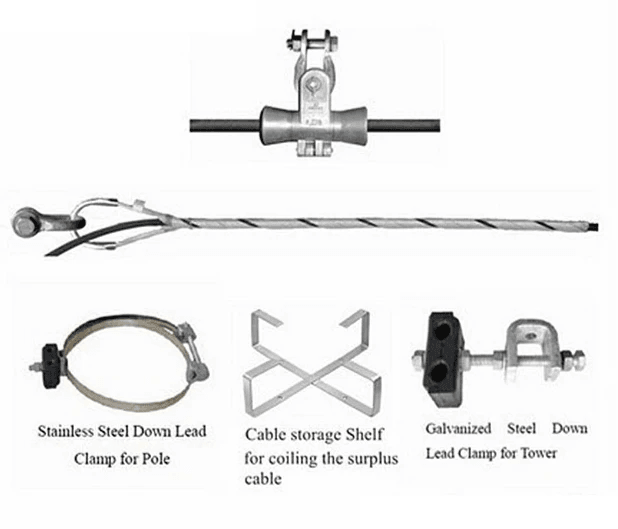
When it comes to transmission line dampers, understanding the price landscape is crucial for any utility company or contractor. The cost of these dampers can vary significantly based on several factors, including material quality, design complexity, and manufacturer reputation. Additionally, the specific type of damper—whether a spacer damper transmission line or a Stockbridge damper in transmission line—can also influence overall pricing.
Cost Factors for Different Dampers
Several key elements determine the price of transmission line dampers. First and foremost is the type of materials used in their construction; high-quality materials may come at a premium but often provide better performance and longevity. Furthermore, installation costs can vary depending on whether specialized equipment or skilled labor is required for setup, especially when dealing with unique types of dampers in transmission lines like Stockbridge or spacer configurations.
Another factor to consider is the scale of the project; larger projects may benefit from bulk purchasing discounts but could also incur higher logistical costs. Moreover, ongoing maintenance requirements should not be overlooked as they can add to the overall investment over time. Ultimately, understanding these cost factors helps stakeholders make informed decisions regarding which type of damper best suits their budget and operational needs.
Comparing Prices: Spacer vs Stockbridge
When comparing prices between spacer dampers and Stockbridge dampers in transmission lines, it’s essential to look at not just upfront costs but also long-term value. Generally speaking, spacer dampers tend to be less expensive than their Stockbridge counterparts due to simpler designs and lower material requirements. However, while initial expenditures might be lower for spacer options, they may not always provide the same level of vibration control effectiveness as Stockbridge dampers.
Stockbridge dampers are often more costly because they are specifically engineered to address more severe vibration issues commonly found in high-tension applications. This advanced engineering translates into enhanced reliability and reduced maintenance needs over time—factors that can justify their higher price tag in critical infrastructure projects. Thus, while comparing prices between these two types of transmission line dampers is important, considering total lifecycle costs will yield a clearer picture.
Investment in Damper Solutions
Investing in quality damper solutions is essential for ensuring system reliability within electrical distribution networks that utilize various types of dampers in transmission lines. While upfront costs may seem daunting at first glance—especially when considering advanced options like Stockbridge or specialized spacer designs—the benefits often outweigh initial expenditures through reduced failure rates and extended asset lifespans.
Moreover, choosing reliable manufacturers who offer robust warranties can further mitigate financial risks associated with purchasing transmission line dampers by ensuring that you receive support if issues arise post-installation. Ultimately, investing wisely now will lead to significant cost savings down the road by minimizing downtime and maintenance expenses related to vibration control failures.
Conclusion

In wrapping up our exploration of transmission line dampers, it’s clear that these components play a crucial role in maintaining the integrity and reliability of electrical infrastructure. From the various types of dampers in transmission lines, including spacer dampers and Stockbridge dampers, each has its unique advantages that cater to specific needs. Understanding how these systems function and their impact on vibration control can significantly enhance the performance of transmission lines.
Key Takeaways on Spacer Dampers
Spacer dampers are essential tools designed to mitigate vibrations caused by wind and other environmental factors affecting transmission lines. They not only help maintain the spacing between conductors but also enhance overall system stability, preventing potential damage or failure. When considering transmission line dampers, spacer damper transmission lines stand out for their effective design and functionality.
The Role of Vibration Dampers
Vibration dampers serve a pivotal role in protecting electrical distribution systems from excessive oscillations that could lead to costly repairs or outages. By understanding the differences between transmission line dampers vs vibration damper systems, stakeholders can make informed decisions about which solution best fits their needs. Effective vibration control ultimately contributes to enhanced system reliability and longevity.
Why Choose Spark Fittings for Your Dampers
When it comes to selecting reliable solutions for your damping needs, Spark Fittings stands out as a top choice for quality transmission line dampers. Their extensive range includes both spacer and Stockbridge damper options tailored specifically for various applications in electrical infrastructure. With competitive pricing on transmission line dampers price points, investing in Spark Fittings ensures you receive durable products backed by excellent service.

